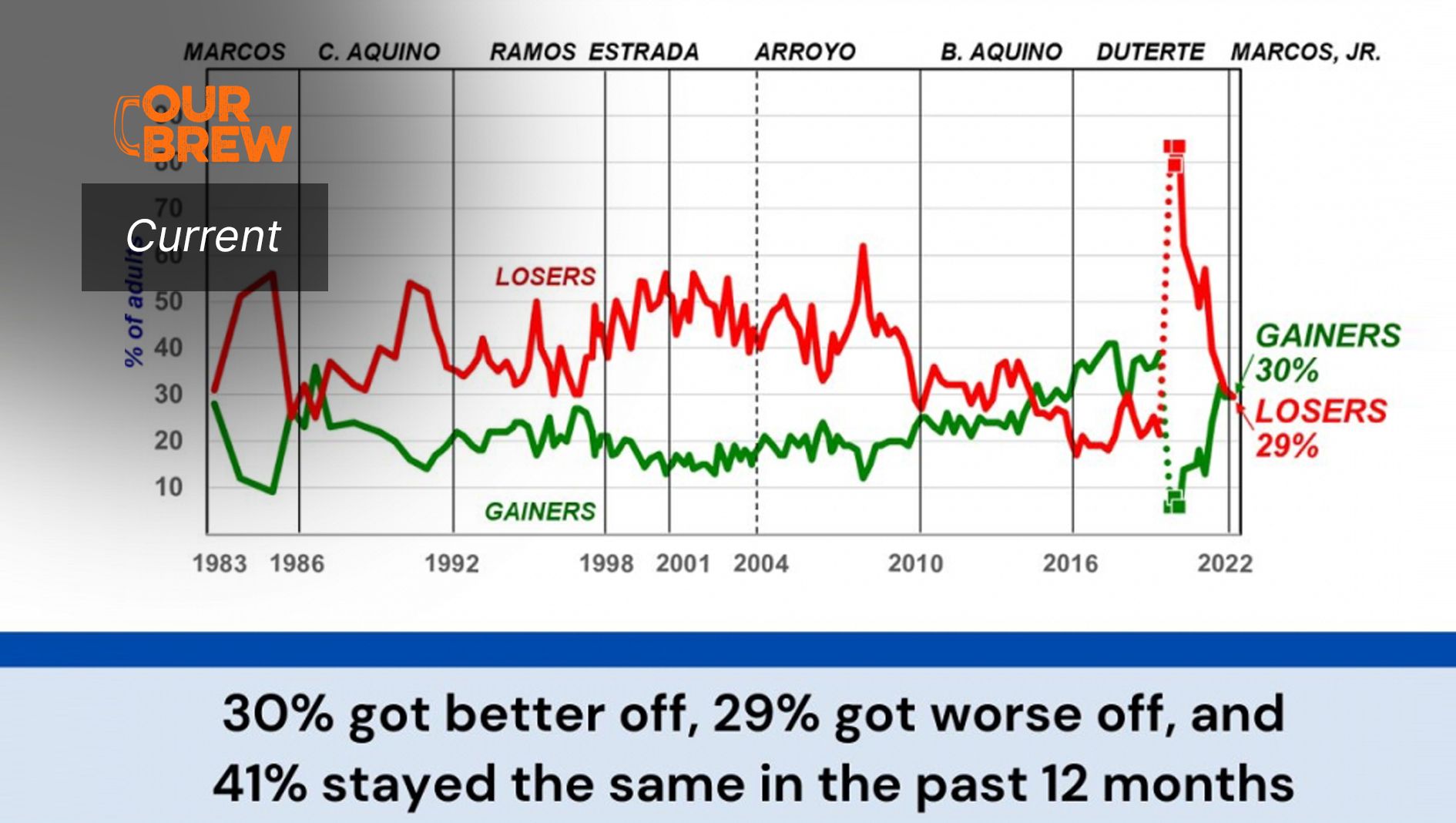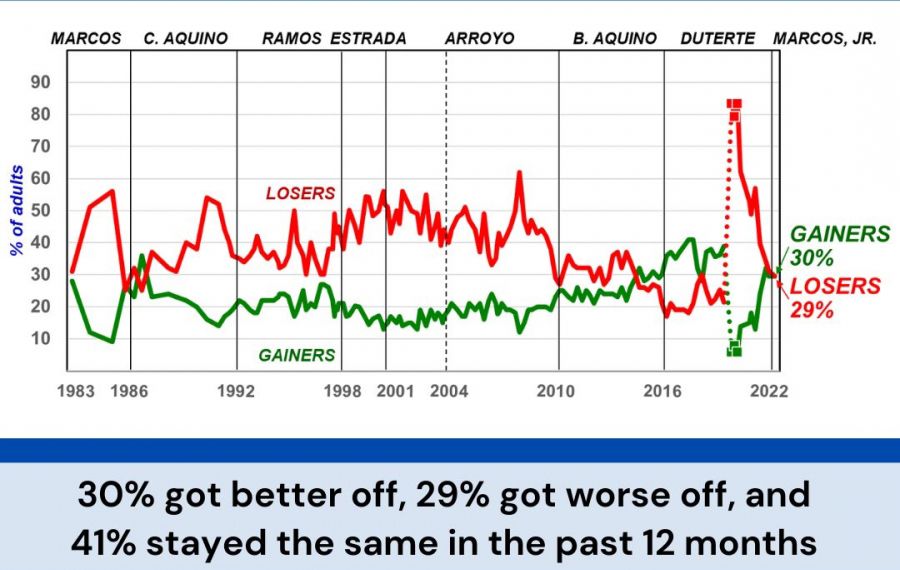
by Social Weather Station
- 30% got better off, 29% got worse off, and 41% stayed the same in the past 12 months
The national Social Weather Survey of September 29-November 2, 2022, the first under the administration of President Ferdinand “Bongbong” Marcos, Jr., found 30% of adult Filipinos saying their quality-of-life was better than twelve months before (termed by SWS as “Gainers”), 29% saying it got worse (“Losers”), and 41% saying it was the same (“Unchanged”), compared to a year ago [Chart 1].
The resulting Net Gainers score is zero (% Gainers minus % Losers, correctly rounded), classified by SWS as fair (-9 to zero) [Chart 2, Table 1].
The October 2022 Net Gainer score is slightly up from the fair -2 in June and April 2022. However, it is still 18 points below the pre-pandemic level of very high +18 in December 2019.
The survey question on the respondents’ assessment of their change in quality-of-life in the past 12 months has been fielded 146 times since April 1983. The Net Gainer score was generally negative until 2015 when it rose to positive numbers until the drastic deterioration beginning with the Covid-19 pandemic lockdowns. It has since trended back upwards but still has not reached the positive range.
High in Metro Manila and Balance Luzon, mediocre in Mindanao and the Visayas
The 2-point rise in the national Net Gainer score between June 2022 and October 2022 was due to increases of 4 points in the Visayas and 3 points in Metro Manila and Balance Luzon, combined with a 4-point decrease in Mindanao.
Compared to June 2022, Net Gainers stayed mediocre in the Visayas, although up by 4 points from -17 to -13 [Chart 3, Table 2].
It stayed high in Metro Manila, up by 3 points from +6 to +9.
It also stayed high in Balance Luzon, up by 3 points from +5 to +8.
However, it fell from fair to mediocre in Mindanao, down by 4 points from -7 to -11.
Excellent among college graduates, high among junior high school graduates, fair among non-elementary graduates, mediocre among elementary graduates
Compared to June 2022, Net Gainers rose from high to excellent among college graduates, up by 18 points from +2 to +20 [Chart 4, Table 3].
It stayed high among junior high school graduates, up by 2 points from +3 to +5.
It fell from fair to mediocre among elementary graduates, down by 5 points from -7 to -12.
It rose from mediocre to fair among non-elementary graduates, up by 4 points from -12 to -8.
Hunger is greater among Losers
The October 2022 survey found that 11.3% of Filipino families, or an estimated 2.9 million, experienced involuntary hunger – being hungry and not having anything to eat – at least once in the past three months (“Third Quarter 2022 Social Weather Survey: Hunger hardly moved from 11.6% to 11.3%,” October 29, 2022, www.sws.org.ph).
Hunger is significantly higher among Losers than among Gainers and Unchanged: involuntary hunger was 15.7% (13.2% moderate, 2.5% severe) among Losers, compared to 9.8% (7.5% moderate, 2.3% severe) among the Unchanged and 9.0% (7.4% moderate, 1.6% severe) among Gainers [Chart 5].
Compared to June 2022, Hunger fell from 10.9% among the Unchanged. However, it stayed at 9.0% among Gainers and rose from 14.9% among Losers.
Net Gainers rises among Self-Rated Poor and Non-Poor families
The October 2022 survey also found 49% of Filipino families rating themselves as Mahirap or Poor, 29% rating themselves as Borderline (by placing themselves on a horizontal line dividing Poor and Not Poor), and 21% rating themselves as Hindi Mahirap or Not Poor (“Third Quarter 2022 Social Weather Survey: 49% of Filipino families feel Poor; 29% feel Borderline, 21% feel Not Poor,” October 20, 2022, www.sws.org.ph).
The Self-Rated Poor are those who belong to households whose heads rated their family as poor or mahirap. This status is then adopted for all members of the household.
The Net Gainers score has been historically lower among the Poor than among the Borderline Poor and Not Poor. This means the Poor have more Losers and fewer Gainers than the Borderline Poor and Not Poor.
Net Gainers was a fair -9 among the Poor, compared to the high +6 among the Borderline Poor and the very high +14 among the Not Poor [Chart 6].
Compared to June 2022, the Net Gainers score rose from mediocre to fair among the Poor, up slightly from -11 to -9. It stayed fair among the Borderline Poor, moving from +8 to +6, while it rose from high to very high among the Not Poor, up from +6 to +14.
SWS classifications
The following are the classifications of Net Gainers scores: The grade “Excellent” is applied to scores at +20 and above; “Very High” to scores between +10 and +19; “High” to scores between +1 and +9; “Fair” to scores between –9 and zero; “Mediocre” to scores between –19 and –10; “Low” to scores between –29 and –20; “Very Low” to scores between –39 and –30; “Extremely Low” to scores at –49 to –40; and “Catastrophic” to scores –50 and below. (Up to December 2019, “Very Low” was the bottom-most category and was applied to scores –30 and below. In the course of the Covid-19 pandemic, new negative categories were delineated. In May 2020, the grade “Extremely Low” was added and applied to scores –40 and below; and in August 2020, the grade of “Catastrophic” was added for those scores below –50.)
The historical distribution of Net Gainers scores by grade is summarized in the table below:
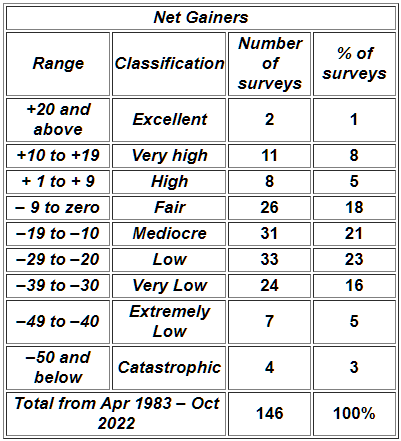
Socio-demographic characteristics of respondents
Applying census weights and correctly rounded, 14% of the respondents are from Metro Manila, 45% from Balance Luzon (or Luzon outside Metro Manila), 19% from the Visayas, and 23% from Mindanao [Table 4].
Forty-four percent are from urban areas, and 56% are from rural areas.
Male and female respondents have a 1-to-1 ratio, and thus, are alternately sampled.
By age group, 10% are youth (18-24), 19% are intermediate youth (25-34), 21% are middle-aged (35-44), 18% are 45 to 54 years old, and 32% are 55 years old and above.
By education, 13% had at most some elementary education, 29% either finished elementary or had some high school education, 30% either finished junior high school or had some vocational schooling, 19% either had some senior high school, finished senior high school, completed vocational school, or attended some college, and 10% either graduated from college or took post-graduate studies.
Survey background
The Third Quarter 2022 Social Weather Survey was conducted from September 29–October 2, 2022, using face-to-face interviews of 1,500 adults (18 years old and above) nationwide: 300 each in Metro Manila, the Visayas, and Mindanao, and 600 in Balance Luzon. Face-to-face is the standard interviewing method for Social Weather Stations; the only exceptions were early in the pandemic when movement restrictions made face-to-face impossible and mobile phone interviews were conducted. Normal face-to-face field operations resumed in November 2020. The sampling error margins are ±2.5% for national percentages, ±5.7% each for Metro Manila, the Visayas, and Mindanao, and ±4.0% for Balance Luzon.
The area estimates were weighted by the Philippine Statistics Authority medium-population projections for 2022 to obtain the national estimates.
The SWS survey question on the change in personal quality-of-life from last year to the present is directed to the probability respondent. On the other hand, the SWS survey questions on the family’s experience of Hunger and Self-Rated Poverty are directed to household heads. These items are non-commissioned and are included on SWS’s initiative and released as a public service.
The exact phrasing of the survey questions (the source language is Filipino; English translation included) was:
On the change in personal quality-of-life from last year ago to the present: “Kung ikukumpara ang uri ng inyong kasalukuyang pamumuhay sa nakaraang 12 buwan, masasabi ba ninyo na ang uri ng inyong pamumuhay ay MAS MABUTI KAYSA NOON, KAPAREHO NG DATI, o MAS MASAMA KAYSA NOON? [Comparing your quality of life these days to how it was 12 months ago, would you say that your quality of life is BETTER NOW THAN BEFORE, SAME AS BEFORE, or WORSE NOW THAN BEFORE?]”
On Hunger: “Nitong nakaraang tatlong buwan, nangyari po ba kahit minsan na ang inyong pamilya ay nakaranas ng gutom at wala kayong makain? (OO, HINDI) [In the last three months, did it happen even once that your family experienced hunger and not have anything to eat? (YES, NO)].
“IF EXPERIENCED HUNGER: Nangyari po ba ‘yan ng MINSAN LAMANG, MGA ILANG BESES, MADALAS, o PALAGI? [Did it happen ONLY ONCE, A FEW TIMES, OFTEN, or ALWAYS?]”
Moderate Hunger refers to those who experienced hunger “Only Once” or “A Few Times” in the last three months, while Severe Hunger refers to those who experienced it “Often” or “Always” in the last three months.
On Self-Rated Poverty: “Saan po ninyo ilalagay ang inyong pamilya sa kard na ito? [Where would you place your family in this card?] (SHOW CARD - DO NOT READ) (Figure 1)”
Figure 1. Self-Rated Poverty Showcard
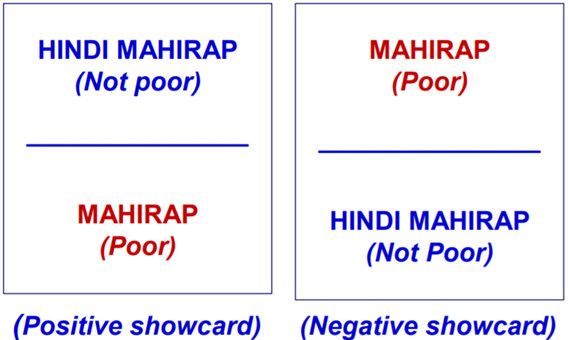
SWS employs its own staff for questionnaire design, sampling, fieldwork, data processing, and analysis, and does not outsource any of its survey operations. This report was prepared by Leo S. Laroza and Marvin R. Ipac.
Chart 1

Chart 2

Chart 3

Chart 4

Chart 5

Chart 6

Table 1
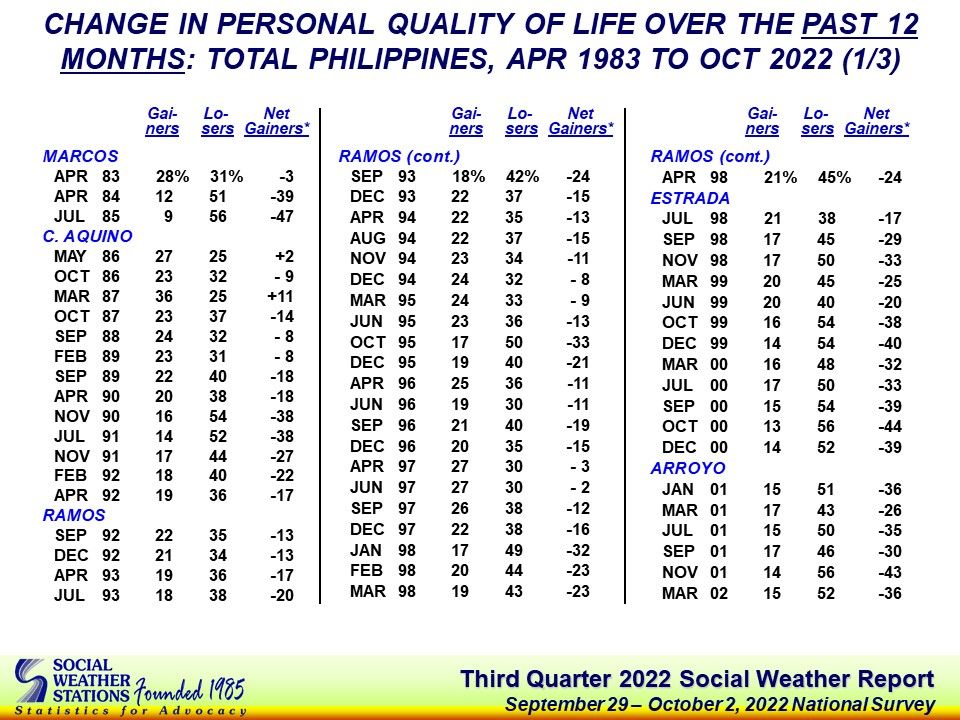
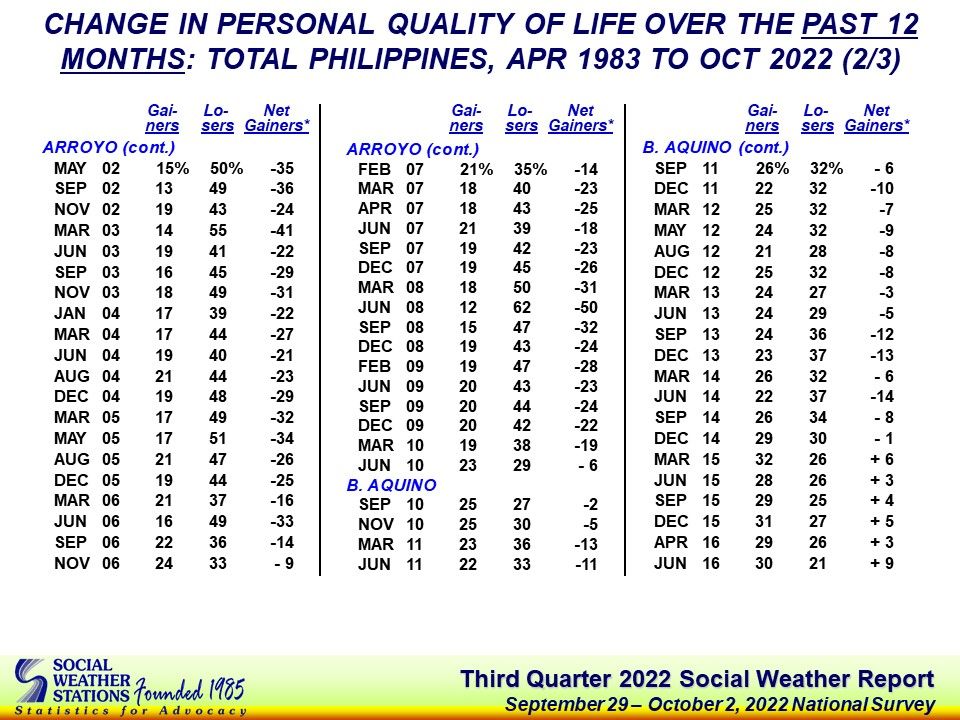
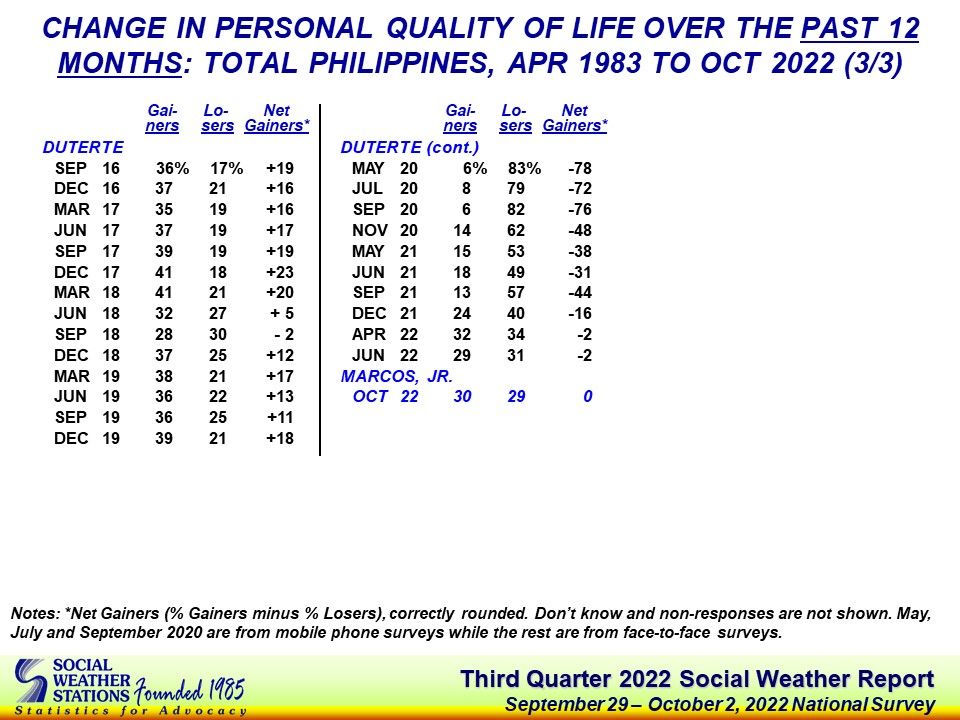
Table 2
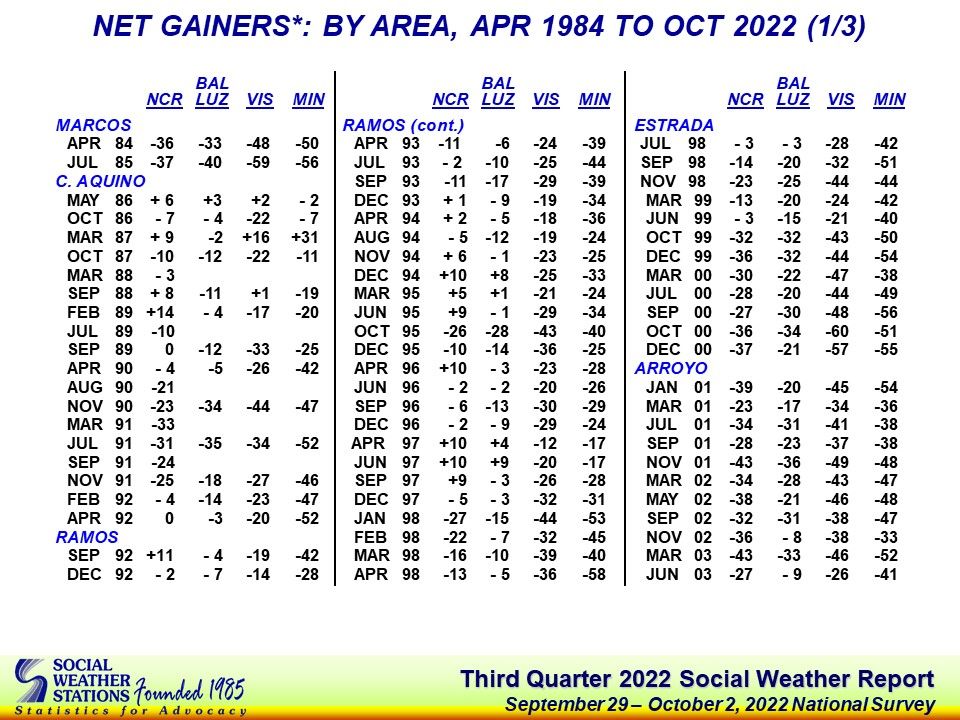
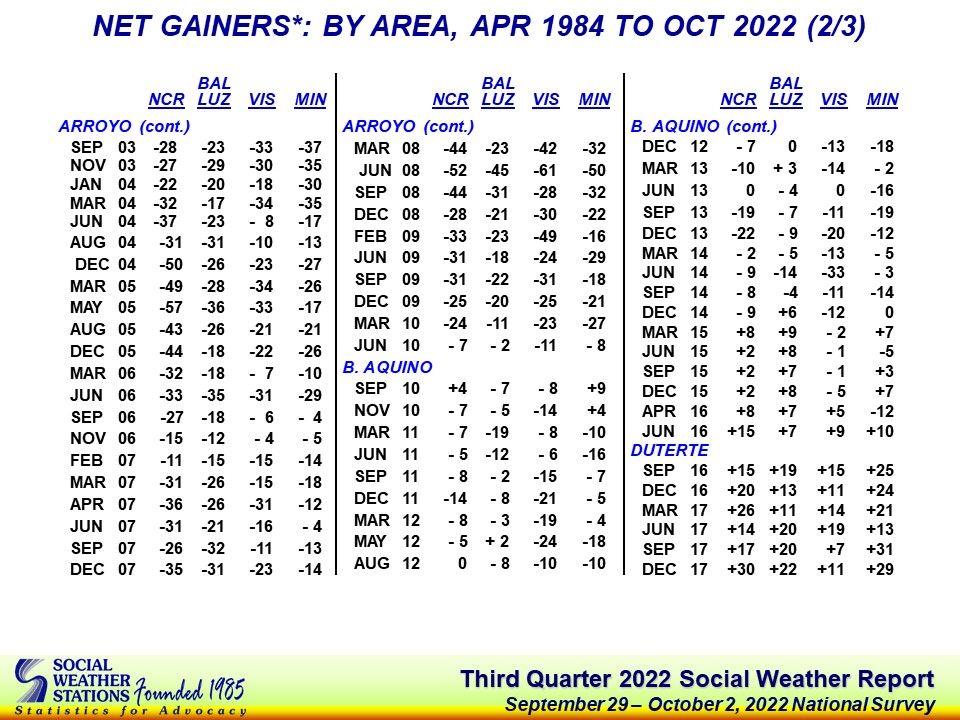
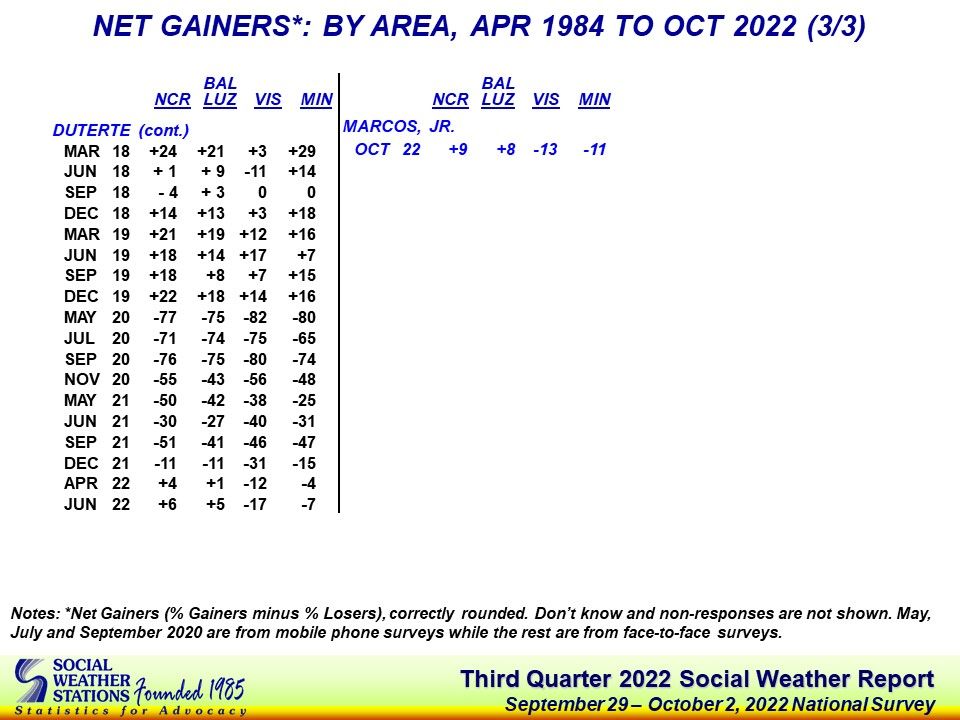
Table 3
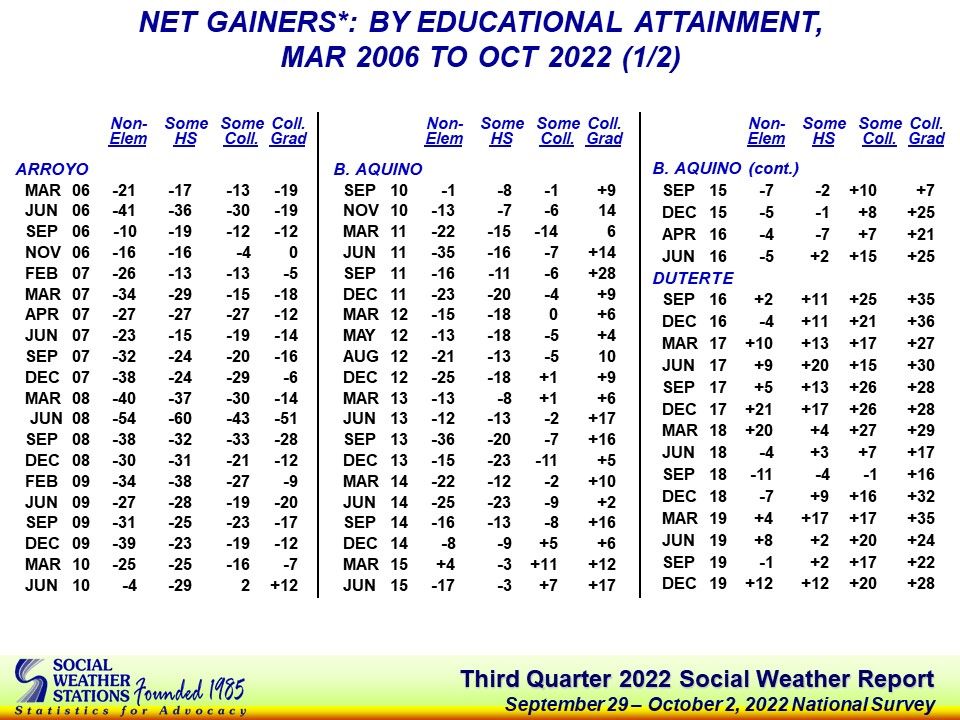
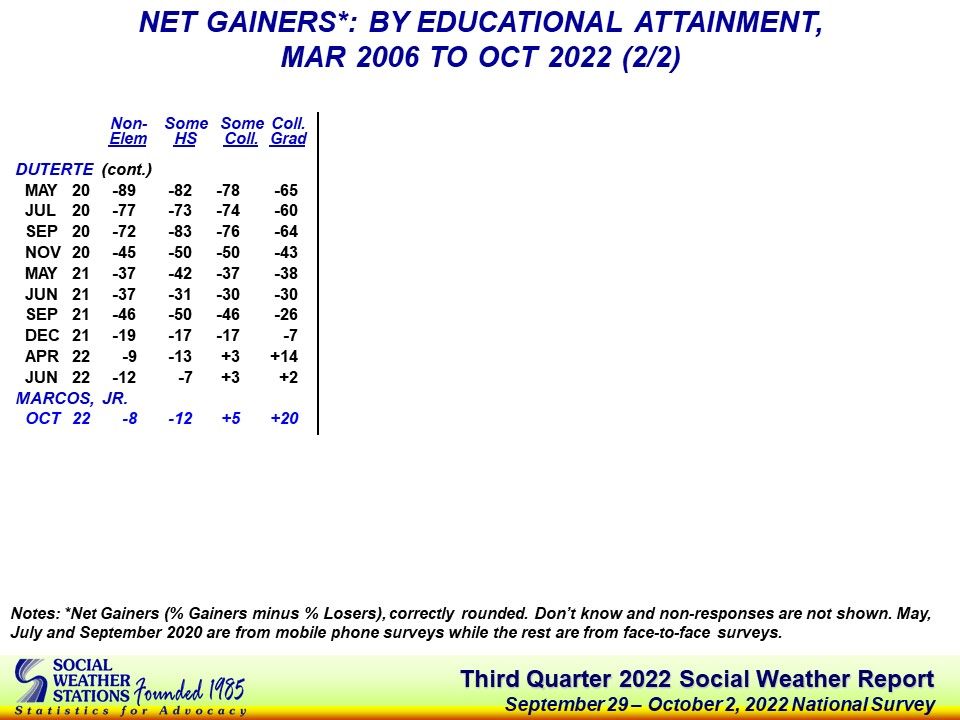
Table 4

If you liked what you just read and want more of Our Brew, subscribe to get notified. Just enter your email below.

